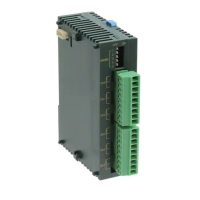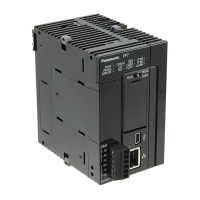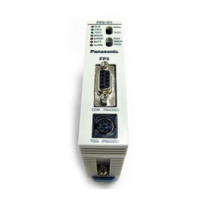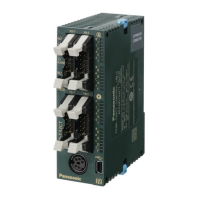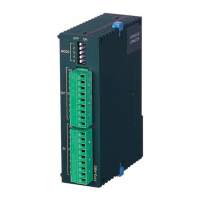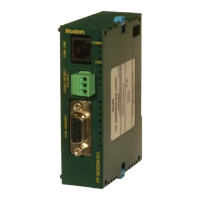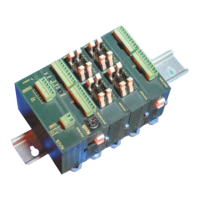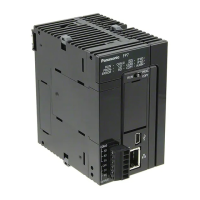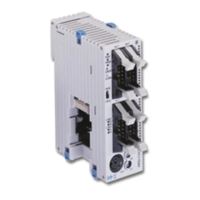FP3 MEWNET-TR
Chapter8-6. Page.137
133
binary:
In general, programmable controllers work with binary numbers in one form or
another to represent various codes or quantities. The binary number system uses the
number 2 as the base and the only allowable symbols are “0” and “1”. There are no
2s, 3s,etc. Each digit of binaryiscalled as“bit”. “Bit” means “binarydigit”. A group
of 8 bits is called a “byte” and a group of 16 bits (two bytes) is called a “word”.
Bit position
15
14 13 12 11 10 9 8 7 6 5 4 3 2 1 0
Binary data
0 0 0 0 0 0 0 0 0 0 1 0 1 0 1 1
Most significant bit
(MSB)
Least significant bit
(LSB)
byte byte
word
The binary number “0000000000101011” is expressed in decimal as follows:
1
×
2
0
+1
×
2
1
+0
×
2
2
+1
×
2
3
+0
×
2
4
+1
×
2
5
+ ..... + 0
×
2
15
= 1 + 2 + 0 + 8 + 0 + 3 2 + ..... + 0
=43
Binary Coded Decimal (BCD):
One of the codes expressed in binary. BCD is a binary code in which each decimal
digit from 0 to 9 is represented by four binary digits (bits). The four positions have
a weighted value of 1, 2, 4, and 8, respectively, starting with the least significant bit.
A thumbwheel switch is specified as a BCD device, and when connected to a
programmable controller, each decimal digit requires four inputs.
BCD is usually expressed grouping four bits as one digit in the same way as the
hexadecimal constant H.
When BCD is grouped in four bit units, the BCD is
expressed by adding the prefix H to the data. Since the weight of each BCD H
code issameasthatof decimals, be suretopay attention not to be confused with
hexadecimal numbers when BCD H code is handled.
Example:
When K1993 (decimal) is expressed in BCD.
0001 1001 1001 0011
K1 9 9 3
H1 9 9 3
Decimal
BCD code
BCD H code
10
0
×
3=3
10
1
×
9=90
10
2
×
9 = 900
10
3
×
1 = 1000
8-6. Terminology

